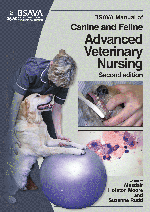
Full text loading...

Successful theatre management is vital for the efficient and effective running of a surgical list in a busy veterinary practice/hospital. Theatre management is usually the responsibility of a veterinary nurse and can provide a defined career path for a qualified, dedicated and experienced nurse. This chapter cover the role of the theatre team, along with more specific duties of theatre nurses. Minor surgical procedures such as haemostasis, tissue handling and suturing are explored. The chapter also considers advanced surgeries such as: thoracic surgery, abdominal surgery, upper respiratory tract surgery, neurosurgery and orthopaedic surgeries.
Advanced surgical nursing, Page 1 of 1
< Previous page | Next page > /docserver/preview/fulltext/10.22233/9781905319725/9781905319725.8-1.gif

Full text loading...






































